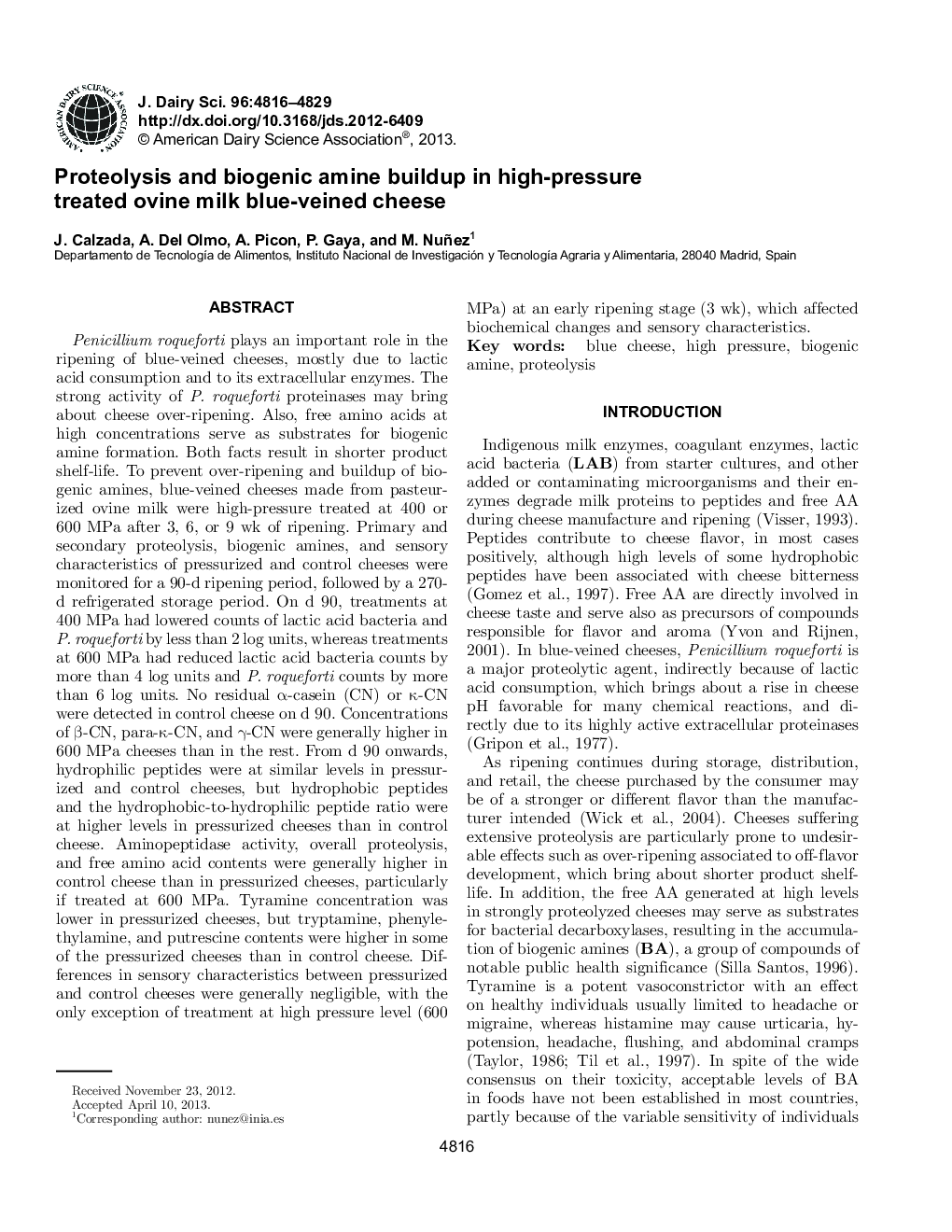| Article ID | Journal | Published Year | Pages | File Type |
|---|---|---|---|---|
| 2438863 | Journal of Dairy Science | 2013 | 14 Pages |
Abstract
Penicillium roqueforti plays an important role in the ripening of blue-veined cheeses, mostly due to lactic acid consumption and to its extracellular enzymes. The strong activity of P. roqueforti proteinases may bring about cheese over-ripening. Also, free amino acids at high concentrations serve as substrates for biogenic amine formation. Both facts result in shorter product shelf-life. To prevent over-ripening and buildup of biogenic amines, blue-veined cheeses made from pasteurized ovine milk were high-pressure treated at 400 or 600 MPa after 3, 6, or 9 wk of ripening. Primary and secondary proteolysis, biogenic amines, and sensory characteristics of pressurized and control cheeses were monitored for a 90-d ripening period, followed by a 270-d refrigerated storage period. On d 90, treatments at 400 MPa had lowered counts of lactic acid bacteria and P. roqueforti by less than 2 log units, whereas treatments at 600 MPa had reduced lactic acid bacteria counts by more than 4 log units and P. roqueforti counts by more than 6 log units. No residual α-casein (CN) or κ-CN were detected in control cheese on d 90. Concentrations of β-CN, para-κ-CN, and γ-CN were generally higher in 600 MPa cheeses than in the rest. From d 90 onwards, hydrophilic peptides were at similar levels in pressurized and control cheeses, but hydrophobic peptides and the hydrophobic-to-hydrophilic peptide ratio were at higher levels in pressurized cheeses than in control cheese. Aminopeptidase activity, overall proteolysis, and free amino acid contents were generally higher in control cheese than in pressurized cheeses, particularly if treated at 600 MPa. Tyramine concentration was lower in pressurized cheeses, but tryptamine, phenylethylamine, and putrescine contents were higher in some of the pressurized cheeses than in control cheese. Differences in sensory characteristics between pressurized and control cheeses were generally negligible, with the only exception of treatment at high pressure level (600 MPa) at an early ripening stage (3 wk), which affected biochemical changes and sensory characteristics.
Related Topics
Life Sciences
Agricultural and Biological Sciences
Animal Science and Zoology
Authors
J. Calzada, A. Del Olmo, A. Picon, P. Gaya, M. Nuñez,
